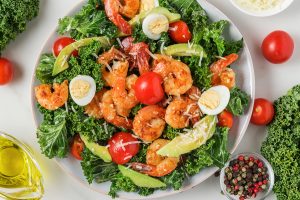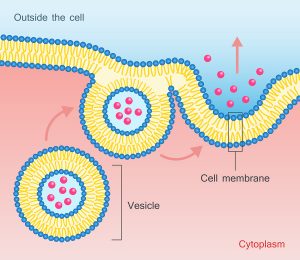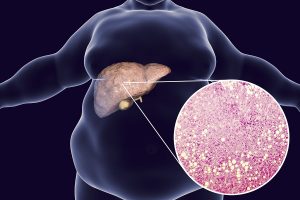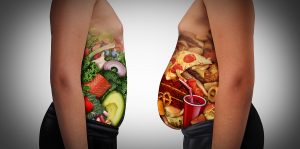A recent publication came to the conclusion that a Mediterranean diet reduces heart attacks and strokes in diabetes. This Canadian and Spanish study compared prospective cohort studies and randomized trials (RCT). 41 reports (3 RCTs and 38 cohorts) formed the basis for this analysis.
Details of the study
Metaanalysis showed that a Mediterranean diet reduced the cardiovascular disease incidence by 38%. It also reduced myocardial infarctions (heart attacks) by 35%. Next the authors compared the highest to the lowest adherents to the Mediterranean diet (Med diet). The highest Med diet adherents showed the following reductions:
Cardiovascular disease mortality: 21%
Coronary heart disease incidence: 27%
Coronary heart disease mortality: 17%
Stroke incidence: 20%
Stroke mortality: 13%
The conclusion was that the Mediterranean diet is beneficial to prevent heart disease and strokes in people with diabetes.
Other studies
In a study from the United Kingdom dated March 2019 several clinical trials were analyzed regarding non-diabetic populations. Again, the question came up, what the effect of a Mediterranean diet was on cardiovascular disease incidence and mortality. The authors reviewed 30 RCTs (49 papers) with12,461 randomized participants and seven ongoing trials. In one study the observation time was 46 months. A Mediterranean diet reduced the cardiovascular disease mortality by 65%!
Another study from Spain published in 2019 examined 7356 older adults (average 67 years) and followed them for 6.8 years. The investigators kept track of the physical activity and put everybody except the controls on a Mediterranean diet. The group on the lightest leisure-time physical activity consuming a Mediterranean diet had the lowest mortality. The all-cause mortality of this group was 73% lower than the control group.
What is so healthy about the Mediterranean diet?
Despite a wide variation between all the 15 countries bordering the Mediterranean Sea, there are common characteristics: an abundance of vegetables and fruit, along with nuts and legumes. Cereal products are largely whole grain. Olive oil is the principal fat source, and people eat fish, seafoods and poultry in moderation. They consume red meat rarely. Cheese and yogurt can be part of the diet, depending on the region.
The first clinical evidence supporting the health benefits of the Mediterranean diet came from the Lyon Heart Study. The researchers placed patients who had a heart attack either on the diet designed by the American Heart Association or a Mediterranean style diet. After a follow-up of 27 months, the group eating the Mediterranean diet had a reduction of heart attacks by 73% and a decreased mortality by 70% compared to the other group.
More detail on the ingredients of the Mediterranean diet
An analysis of the various foods of the Mediterranean diet shows the reasons for the health benefits clearly. The fats that people on a Mediterranean diet eat are heart-healthy monounsaturated fats like olive oil or fats that contain omega-3 fatty acids. They come from fish (tuna, salmon, trout, sardines) or from plant sources (walnuts, other tree nuts and flax seed).
As there is an emphasis on natural foods, the diet is extremely low in trans fatty acids (hydrogenated fats), which increase the risk for cardiovascular disease. As people consume more than 300g of vegetables per capita daily, the contents of antioxidants and other beneficial plant chemicals is much higher in comparison to Western diets. There are many individual components of the Mediterranean diet that contribute to the reduction of disease. This is particularly true for heart disease. It also is apparent, that it is not one single food or nutrient that is responsible for the health benefits. What matters are the interactive effects of all the nutrients that lead to the health benefits.
No processed food means healthier living
The practical application does not mean deprivation and starvation, but a move away from processed fats (margarine), baked goods (donuts, muffins, pastries), and high saturated fat snacks and trans fats (chips, crackers, cookies, pies). Food choices move towards those of fresh fruits and vegetables, nuts, fish, and olive oil. Portions or servings have to be adequate to maintain a healthy weight.
Mediterranean food is not the heaping plate of pasta with an afterthought of vegetables. It also is not the super-size fast food pizza with pepperoni and cheese. Mediterranean food incorporates fresh food rather than the fast food. It entails a shift from large portions of red meat to smaller portions of fish, a transition from highly processed foods to ample helpings of dark green vegetables with a dose of olive oil. Low amounts of alcohol, especially red wine can make a meal enjoyable, which means one drink per day for women, and two drinks per day for men. And after dinner go for a walk!
Olive oil is one of the reasons why the Mediterranean diet is so healthy
In the past it was thought that the monounsaturated fatty acids in olive oil would be the reason why it is protective of the heart. However, newer studies have shown that it is the polyphenols and among these in particular hydroxytyrosol that lower blood pressure and protect you from hardening of the arteries.
In a 2012 study from Spain it was found that mortality from heart attacks was 44% lower than that of a control group who did not incorporate olive oil in their diet.
How polyphenols in olive oil work for you
Only two tablespoons of extra virgin olive oil per day protect you from heart disease. It does so by reducing the total cholesterol level in the blood as well as the LDL cholesterol level. When there is more polyphenol in olive oil (such as in extra virgin olive oil), the body produces more HDL, which is essential to extract oxidized LDL from arterial plaque. On top of that polyphenol rich olive oil will increase the size of the HDL particles (these larger particles are called HDL2), which are more efficient in extracting oxidized LDL from arterial plaques. A Sept. 2014 study in humans showed that higher polyphenol olive oil as found in extra virgin olive oil caused an increase in the more effective HDL2 particles, which cleans out plaques from arteries more efficiently than the regular, cheaper olive oil.
Endothelial function
The endothelium is the lining of the arteries. Normal endothelial functioning involves widening of the arteries and maintaining its flexibility. The body achieves this through production of a signal molecule, called nitric oxide; the endothelial cells that line our arteries from inside produce it. Exercise increases the production of nitric oxide as well (Ref.1).
In a group of patients with poor endothelial function 2 tablespoons of olive oil (polyphenol rich) per day given over 4 months (the time of the study) showed a significant improvement of endothelial function.
The authors suggested that an enzyme in the endothelial cells, called nitric oxide synthase is being stimulated by components of polyphenol-rich olive oil. This leads to protracted release of nitric oxide, which in turn keeps blood vessels flexible and wide open. Other investigators found that olive oil can influence even a hereditary gene variant of endothelial nitric oxide synthase found in people with a history of premature heart attacks. This high-risk group of people should take extra virgin olive oil regularly to prevent premature heart attacks and strokes.
Endothelial dysfunction occurs when the arteries no longer can deliver adequate amounts of blood to vital organs like the heart or the brain. Endothelial dysfunction is also present in patients with type 2 diabetes, obesity, high blood pressure and metabolic syndrome. Introducing extra virgin olive oil in the diet of these patients will help restore their endothelial function.
Lowering blood pressure
In a study on 23 hypertensive patients it was shown as far back as in 2000 that extra virgin olive oil over 6 months allowed physicians to reduce high blood pressure medications by 48%. When the study was crossed over, the reverse was the case for the control group on sunflower oil. The polyphenols of olive oil released nitric oxide, which is known to lower blood pressure. This is an important finding. High blood pressure is a risk factor for the development of hardening of the coronary arteries. This leads to heart attacks, congestive heart failure, but also stroke. Regular intake of 2 tablespoons of extra virgin olive oil often will reverse high blood pressure and restore normal endothelial function.
Preventing heart attacks and strokes
In April of 2013 The New England Journal of Medicine published a Spanish diet study that showed that a participants on a Mediterranean diet with olive oil or nuts had 30% less heart attacks over 5 years than people on a low fat control diet. Other studies have also shown that olive oil and omega-3 fatty acids play a big role in preventing heart attacks and strokes. We also know that regular exercise reduces the risk further; so does keeping your body mass index below 25.0. Extra virgin olive oil is part of the protection from heart attacks and strokes. The study did not show any protection against cancer.
Conclusion
A Mediterranean diet reduced heart attacks and strokes in diabetic patients, but also in patients without diabetes. Here I attempted to show what the ingredients of a Mediterranean diet are that lead to such astounding positive effects. There is an emphasis on vegetables and fresh ingredients of food. In addition, olive oil and a lack of processed food are also important. With these wholesome ingredients the lining of the arteries works best. The body reduces cholesterol and lowers blood pressure. The end result is that there are less heart attacks and strokes, and people live longer.
Note: Part of this was previously published here and also here.















